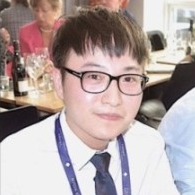New Insights into Marine Drugs Discovery
A special issue of Life (ISSN 2075-1729). This special issue belongs to the section "Pharmaceutical Science".
Deadline for manuscript submissions: closed (12 December 2022) | Viewed by 23791
Special Issue Editors
Interests: natural products chemistry; mass spectrometry-based metabolomics; pharmacognosy
Special Issues, Collections and Topics in MDPI journals
Interests: investigation of chemical constituents from natural products and their bioactivities (plants, fungi, traditional Chinese medicine, and herbal medicine); isolation of endophytes from formosan plants and establishment of their fermentate extract banks; medicinal botany research; development of functional foods and dietary supplements
Interests: apoptosis; cell culture; cancer biology; flow cytometry
Special Issues, Collections and Topics in MDPI journals
Special Issue Information
Dear Colleagues,
One of the most famous oceanographers, Dr. Sylvia Earle, once said "Great attention gets paid to rainforests because of the diversity of life there. Diversity in the oceans is even greater." With their diversity and uniqueness, marine organisms have become an important source of important compounds for the development of new drug leads. The exploration of novel chemical structures and bioactive secondary metabolites is a key element for developing innovative drugs. The study of marine natural products began in 1950 when Bergman isolated several antiviral nucleosides from the Caribbean sponge Tethya crypta. The science of marine natural product chemistry has rapidly developed over the past six decades, and to date, marine natural product chemists have isolated more than 20,000 new compounds from marine organisms, including bacteria, fungi, microalgae, seaweeds, sponges, soft corals, mollusks, bryozoans, echinoderms, and ascidians. Many of these compounds are structurally unique and exhibit significant biological activities, and several compounds are expected to be developed as important drug leads. In light of these successes, we are promoting this Special Issue on new insights into marine drug discovery. We aim to publish research focusing not only on the bioactive compounds exploration, but also novel research strategies of marine drug discovery. This Special Issue will publish manuscripts and reviews covering the following themes, although similar themes related to marine natural products are also welcome:
- Isolation of marine secondary metabolites with novel structures and biological activity.
- Biotechnological developments in the field of marine natural products.
- Drug lead development from marine organisms.
- Technological advances in the extraction methods of marine secondary metabolites.
- The application of computer models and artificial intelligence in the discovery of novel marine natural products.
- The application of novel organic synthetic methods for the synthesis of marine secondary metabolites.
- The application of modern chromatographic techniques for the purification of novel marine natural products.
- The application of modern spectroscopic techniques for the identification of marine secondary metabolites.
- The development of pharmaceutical products or cosmeceuticals from marine secondary metabolites or extracts.
- The application of new genetic and chemotaxonomic tools for the identification and characterization of marine organisms.
Dr. Kuei-Hung Lai
Dr. Ho-Cheng Wu
Prof. Dr. Mohamed El-Shazly
Guest Editors
Manuscript Submission Information
Manuscripts should be submitted online at www.mdpi.com by registering and logging in to this website. Once you are registered, click here to go to the submission form. Manuscripts can be submitted until the deadline. All submissions that pass pre-check are peer-reviewed. Accepted papers will be published continuously in the journal (as soon as accepted) and will be listed together on the special issue website. Research articles, review articles as well as short communications are invited. For planned papers, a title and short abstract (about 100 words) can be sent to the Editorial Office for announcement on this website.
Submitted manuscripts should not have been published previously, nor be under consideration for publication elsewhere (except conference proceedings papers). All manuscripts are thoroughly refereed through a single-blind peer-review process. A guide for authors and other relevant information for submission of manuscripts is available on the Instructions for Authors page. Life is an international peer-reviewed open access monthly journal published by MDPI.
Please visit the Instructions for Authors page before submitting a manuscript. The Article Processing Charge (APC) for publication in this open access journal is 2600 CHF (Swiss Francs). Submitted papers should be well formatted and use good English. Authors may use MDPI's English editing service prior to publication or during author revisions.
Keywords
- marine drug discovery
- novel research strategy








